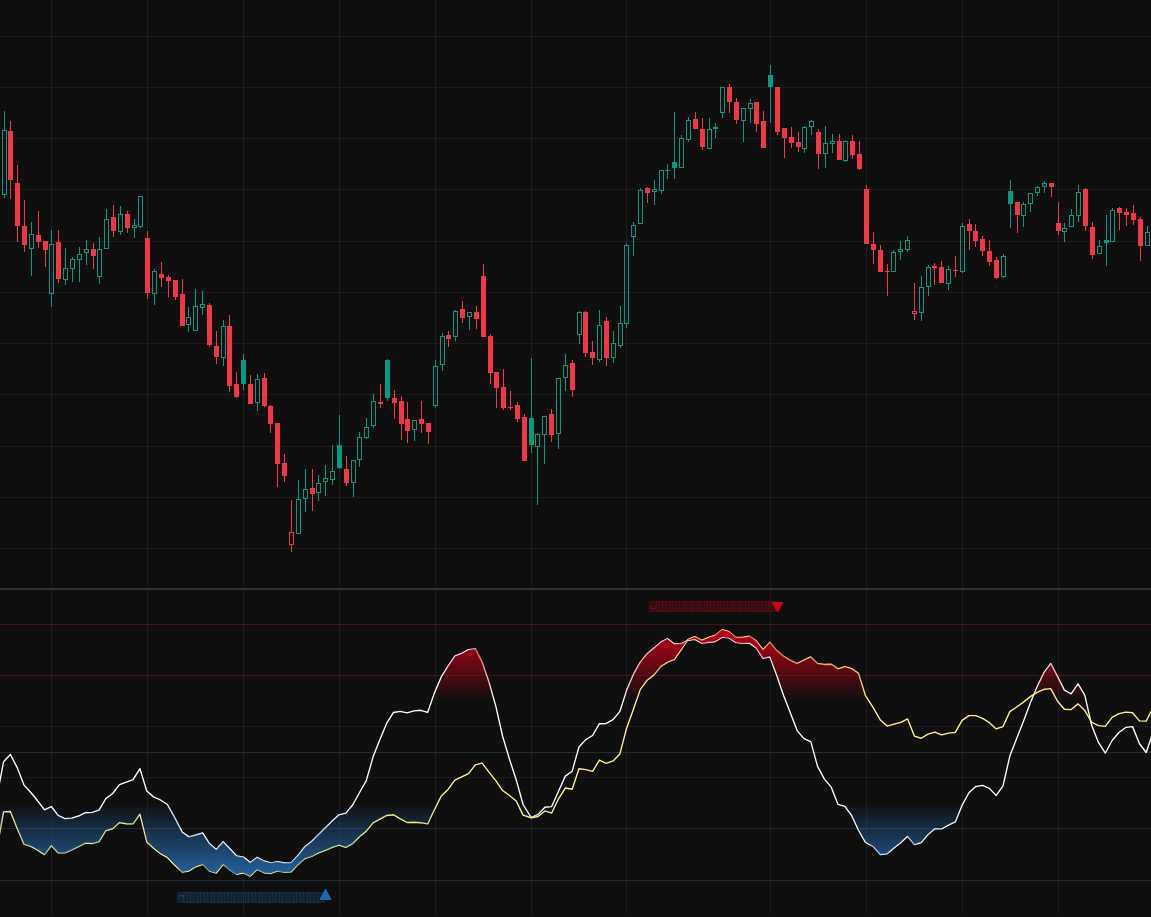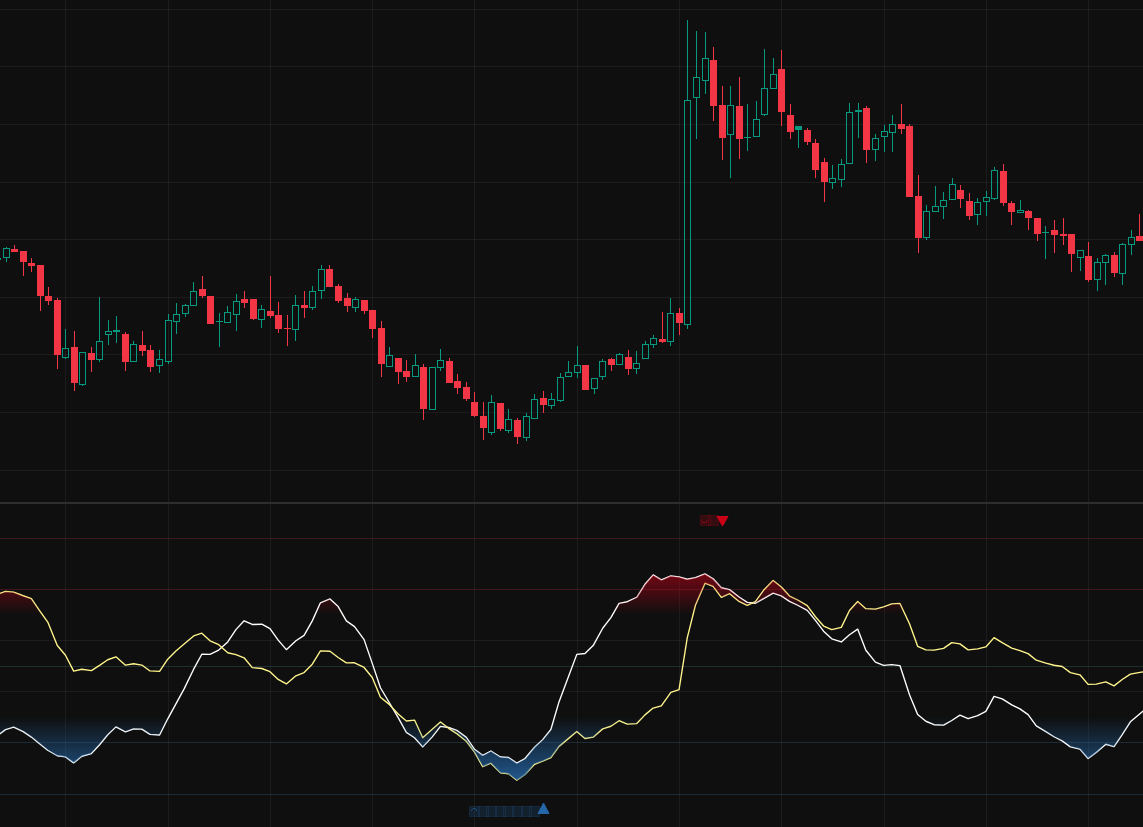Double Trend Exhaustion™ Premium Indicator
By tracking shifts in 21-period and 112-period Williams %R, the indicator detects overbought and oversold conditions. EMA smoothing refines signals, reducing noise. Square markers warn of exhaustion, while a triangular signal confirms a potential reversal.
Williams %R - Fidelity Investements
https://www.fidelity.com/learning-center/trading-investing/technical-analysis/technical-indicator-guide/williams-r

Williams %R is a momentum oscillator that quantifies the relative position of the closing price within the asset's recent high-low range. It is calculated by taking the difference between the highest high over a defined period and the latest closing price, then dividing this by the total range (highest high minus lowest low) over that same period.
Double Trend Exhaustion™ Premium enhances traditional momentum analysis by computing Williams %R across two distinct periods. As shown in the graph above, the two line charts represent the 21-period and 112-period Williams %R values. The 21-period %R reflects short-term momentum shifts, while the 112-period %R captures broader trend movements, providing a dual-perspective on market conditions.
To eliminate unnecessary noise and smooth out erratic fluctuations, the indicator applies exponential moving averages (EMAs) to both calculations. This refinement ensures that signals remain clear and actionable rather than reacting to minor market spikes.

The core feature of this indicator is its ability to detect and respond to trend exhaustion. When an asset enters an overbought or oversold zone—defined by extreme values—the indicator issues preliminary warnings, represented by square markers on the chart. These serve as alerts that the prevailing trend may be losing strength. Once the exhaustion phase fully plays out and momentum starts shifting, the indicator generates a triangular signal, marking a potential trend reversal. This structured approach helps traders anticipate market turning points rather than reacting late.

Traders should monitor the square markers as early warnings of possible exhaustion. These signals indicate that a trend is reaching its limit, allowing traders to prepare for potential reversals. However, an actual reversal signal is confirmed only when the triangular marker appears, signifying that the exhaustion phase has ended and a momentum shift may be underway.
For optimal results, this indicator should be used in conjunction with price action analysis, key support and resistance levels, and volume confirmation. It is particularly effective for momentum traders, swing traders, and mean-reversion strategies, helping them capitalize on market exhaustion points before trend reversals occur.